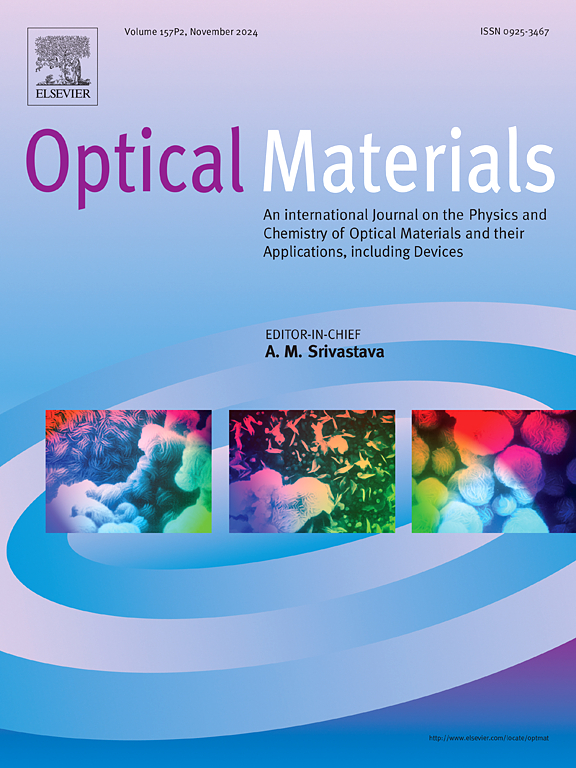Measurement of stress optical coefficients for GFRP based on terahertz time-domain spectroscopy
IF 4.2
3区 材料科学
Q2 MATERIALS SCIENCE, MULTIDISCIPLINARY
引用次数: 0
Abstract
Glass Fiber-Reinforced Polymer (GFRP) finds extensive applications in the high-end equipment manufacturing industry owing to its advantages of light weight, high strength, and corrosion resistance. Since the residual stress in GFRP builds up during the curing process and affect its mechanical properties and service life, the characterization of the residual stress in GFRP is crucial. In this study, we establish a theoretical model based on the anisotropic stress-optics law for the orthorhombic crystalline system to describe the terahertz-elasticity of GFRP and calibrate the stress optical coefficients of GFRP. First, the residual stress in GFRP at different curing temperatures are measured by fiber Bragg grating sensors. Then, the refractive index of GFRP with different residual stress are obtained based on transmission-type THz-TDS. Finally, based on the proposed photoelastic model of GFRP, the stress optical coefficients of GFRP are measured by combining the measurement results of residual stress and refractive index. The experimental results show that the refractive index of GFRP decreases with the increase of residual stress; the stress optical coefficients of GFRP are determined as q11 = −5.612 × 10−9 Pa−1, q12 = −2.548 × 10−9 Pa−1, q21 = −1.305 × 10−8 Pa−1, q22 = −1.408 × 10−9 Pa−1. The modeling of terahertz photoelasticity in GFRP and the determination of stress optical coefficients provide a basis for characterizing residual stress in GFRP by THz-TDS.
基于太赫兹时域光谱测量 GFRP 的应力光学系数
玻璃纤维增强聚合物(GFRP)具有重量轻、强度高和耐腐蚀等优点,因此在高端设备制造业中得到广泛应用。由于玻璃纤维增强塑料在固化过程中会产生残余应力,从而影响其机械性能和使用寿命,因此玻璃纤维增强塑料残余应力的表征至关重要。在本研究中,我们建立了一个基于正交晶系各向异性应力光学定律的理论模型来描述 GFRP 的太赫兹弹性,并校准了 GFRP 的应力光学系数。首先,利用光纤布拉格光栅传感器测量不同固化温度下 GFRP 的残余应力。然后,基于透射型 THz-TDS 获得不同残余应力下 GFRP 的折射率。最后,根据提出的 GFRP 光弹性模型,结合残余应力和折射率的测量结果,测得 GFRP 的应力光学系数。实验结果表明,GFRP 的折射率随残余应力的增大而减小;GFRP 的应力光学系数分别为 q11 = -5.612 × 10-9 Pa-1、q12 = -2.548 × 10-9 Pa-1、q21 = -1.305 × 10-8 Pa-1、q22 = -1.408 × 10-9 Pa-1。GFRP 中的太赫兹光弹性建模和应力光学系数的确定为利用 THz-TDS 表征 GFRP 中的残余应力奠定了基础。
本文章由计算机程序翻译,如有差异,请以英文原文为准。
求助全文
约1分钟内获得全文
求助全文
来源期刊

Optical Materials
工程技术-材料科学:综合
CiteScore
6.60
自引率
12.80%
发文量
1265
审稿时长
38 days
期刊介绍:
Optical Materials has an open access mirror journal Optical Materials: X, sharing the same aims and scope, editorial team, submission system and rigorous peer review.
The purpose of Optical Materials is to provide a means of communication and technology transfer between researchers who are interested in materials for potential device applications. The journal publishes original papers and review articles on the design, synthesis, characterisation and applications of optical materials.
OPTICAL MATERIALS focuses on:
• Optical Properties of Material Systems;
• The Materials Aspects of Optical Phenomena;
• The Materials Aspects of Devices and Applications.
Authors can submit separate research elements describing their data to Data in Brief and methods to Methods X.
 求助内容:
求助内容: 应助结果提醒方式:
应助结果提醒方式:


